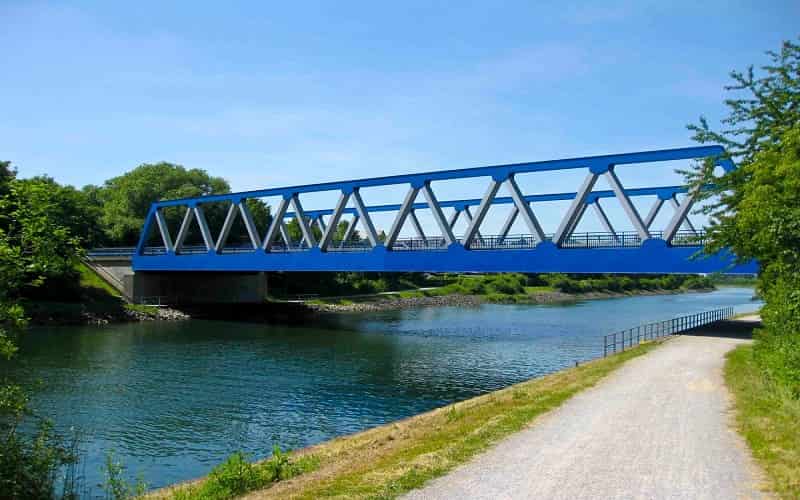
The Warren truss bridge stands as a testament to the brilliance of engineering, combining both form and function in a harmonious design. Its distinctive triangular pattern has made it a popular choice for spanning long distances and supporting heavy loads. In this article, we delve into the intricacies of the Warren truss bridge’s design and explore why it is renowned for its remarkable strength.
The Geometry of Strength
The Warren truss bridge derives its strength from its geometric arrangement. Its signature triangular truss framework is composed of equilateral triangles formed by diagonal members intersecting with vertical and horizontal elements. This geometry disperses the applied forces efficiently, allowing the bridge to support substantial loads with ease.
Load Distribution
At the core of the Warren truss’s strength lies its ingenious method of load distribution. The diagonals in the truss bear tension and compression forces, effectively channeling them along the truss members to the supports. This load-sharing mechanism prevents concentrated stress points and ensures that no single component is overburdened, contributing to the bridge’s overall stability.
Redundancy and Safety
The Warren truss design offers an inherent redundancy that further enhances its strength. In the event that one truss member fails or experiences excessive stress, the other members continue to bear the load. This safety feature minimizes the risk of catastrophic failure and provides engineers with a reliable and predictable structure.
Efficient Use of Materials
Efficiency in material usage is another key factor that makes the Warren truss bridge so strong. The diagonal members primarily bear tension or compression, allowing for the use of slender members without compromising structural integrity. This efficient use of materials reduces weight while maintaining the ability to support heavy loads.
Flexibility and Adaptability
The Warren truss’s adaptability to different spans and load requirements is another reason for its strength. Engineers can modify the depth and spacing of truss members to suit specific needs. This flexibility makes the Warren truss design applicable to various bridge lengths and conditions without sacrificing its robustness.
Aesthetic Appeal
Beyond its engineering excellence, the Warren truss bridge’s visual appeal adds to its allure. The repeating pattern of triangles creates an elegant and symmetrical form that resonates with both functionality and aesthetics. This harmony between form and function has contributed to the enduring popularity of the Warren truss design.
Modern Applications
While the Warren truss design has historical roots, it continues to find relevance in modern infrastructure projects. From road and rail bridges to pedestrian walkways, its strength and versatility remain highly valued by engineers and architects seeking solutions for diverse transportation and structural challenges.
Conclusion
The Warren truss bridge’s strength is a result of meticulous engineering, thoughtful design, and a deep understanding of structural mechanics. Its ability to efficiently distribute loads, adapt to various spans, and provide redundancy make it a cornerstone of bridge design. As technology advances and architectural trends evolve, the timeless strength and elegance of the Warren truss bridge continue to inspire awe and innovation.
In a world where engineering feats shape the landscape and connect communities, the Warren truss bridge stands tall as an enduring symbol of strength, creativity, and the boundless potential of human ingenuity.